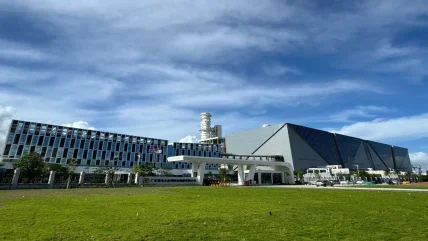
Chinese state-owned power utility Guangdong Energy Group’s 1.34GW Guangdong Huizhou combined heat and power (CHP) plant in China has started commercial operations.
The CHP plant features two hydrogen-ready 9HA.01 combined-cycle power generation equipment delivered by GE Vernova. Apart from delivering electricity into the grid, the CHP plant will supply steam for the industrial process of the chemical complex in Huizhou, Guangdong Province.
According to GE Vernova, the Guangdong Huizhou project uses the first localised 9HA.01 manufactured by General Harbin Electric Gas Turbine (Qinhuangdao) in China.
General Harbin Electric Gas Turbine is a joint venture (JV) formed in 2019 between GE and Harbin Electric. The JV aims to focus on heavy duty gas turbine localisation, delivering more efficient and reliable support for Chinese gas-fired power plants.
Harbin Electric also delivered steam turbine, generator, and balance-of-plant equipment for the Guangdong Huizhou power plant.
GE Vernova China gas power services president Xu Xin said: “GE Vernova believes that the Guangdong Huizhou project could serve as a model to develop hydrogen-blended H-class natural gas power generation across other provinces.
“In Guangdong, we focus on helping to address the growing electricity and steam needs while reducing carbon emissions.”
GE Vernova had also supplied two 9F.05 gas turbines for Guangdong Energy Group’s Xinhui power plant which achieved commercial operation in 2018.
Currently, GE Vernova is supporting the transition of the plant operator from coal-to-gas at its Dongguan Ningzhou combined cycle power plant.
The Dongguan Ningzhou facility will feature three GE Vernova 9HA.02 gas turbines alongside Harbin Electric’s steam turbines, generators, and other auxiliary equipment.
A Guangdong Energy Group representative said: “GE Vernova has long been our company of choice when transitioning our power plants from coal to natural gas, and we trust GE Vernova advanced H-Class gas turbines will help promote the use of hydrogen blending in power generation across other provinces, as aligned to China’s Medium and Long-term Plan for the Development of Hydrogen Energy Industry (2021–2035) objectives.”






